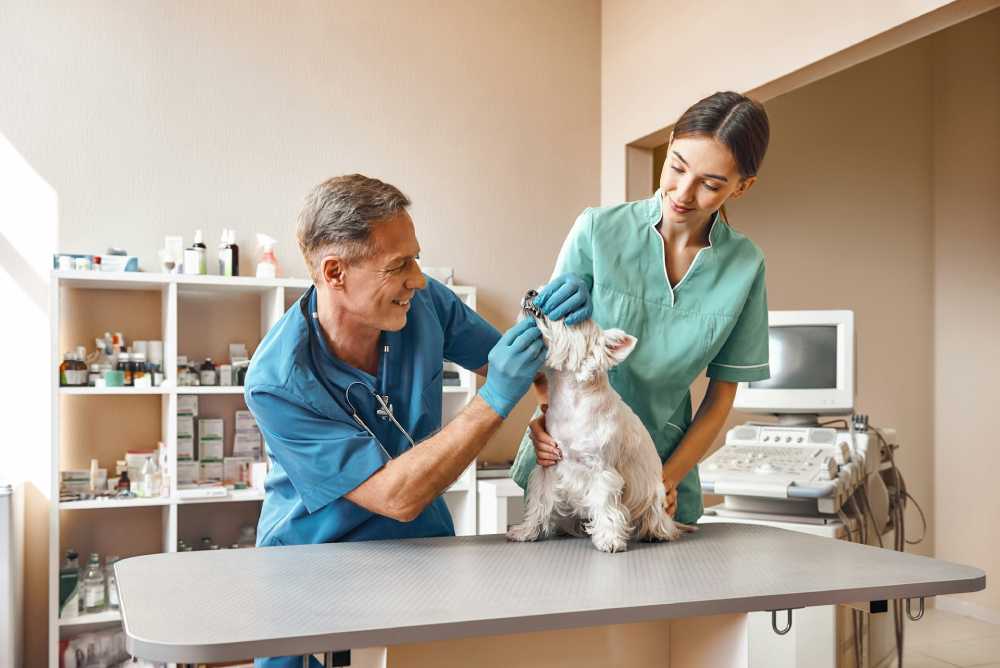How to Spot the Signs of Oral Cancer in Your Dog
Oral cancer is a serious condition that can affect dogs of all breeds and ages. While it may not be the first thing pet owners think about, being aware of the signs and symptoms of this disease can be crucial in ensuring early detection and treatment.
Catching the disease early not only increases the chances of successful treatment but also improves the quality of life for your furry friend. In this article, we will discuss the signs of oral cancer in dogs, diagnosis procedures, treatment options, and preventive measures to help you take better care of your pet’s health.
Understanding Oral Cancer
Oral cancer in dogs is a type of cancer that occurs in the mouth, including the lips, gums, tongue, and other tissues. It is often aggressive and can spread quickly to other parts of the body if not detected early. The most common types of oral cancer in dogs are melanoma, squamous cell carcinoma, and fibrosarcoma. Each type varies in its aggressiveness and response to treatment, making it essential for pet owners to recognize the early signs and seek veterinary care promptly.
Signs and Symptoms
Recognizing the signs of oral cancer in dogs is vital for early intervention. Some common symptoms include:
- Bad Breath (Halitosis): Persistent bad breath that doesn’t improve with regular dental care may indicate the presence of tumors or infections in the mouth.
- Difficulty Eating or Chewing: If your dog shows signs of discomfort, avoids eating, or chews on one side of the mouth, it could be due to pain caused by oral cancer.
- Swelling or Lumps in the Mouth: Check your dog’s mouth regularly for unusual lumps or growths. Swelling of the face or jaw may also indicate the presence of a tumor.
- Bleeding from the Mouth: Unexplained bleeding, especially when not caused by injury or dental issues, can be a sign of oral cancer.
- Weight Loss: A sudden decrease in weight, often due to difficulty eating or loss of appetite, may be linked to oral cancer.
- Drooling: Excessive drooling, especially if it is mixed with blood, is another symptom that should not be ignored.
Diagnosis and Veterinary Evaluation
If you notice any of these signs, it is important to consult with a veterinarian as soon as possible. A thorough examination of the mouth and diagnostic tests such as X-rays, biopsies, and blood tests will help determine the presence and type of cancer. Early detection is crucial in managing oral cancer effectively and can help in formulating a treatment plan tailored to your dog’s specific needs.
Treatment Options
The treatment of oral cancer in dogs depends on the type, size, and location of the tumor, as well as the overall health of the dog. Common treatment options include:
- Surgery: Surgical removal of the tumor is often the first line of treatment. In some cases, this may involve removing a portion of the jawbone or other tissues to ensure the complete removal of cancerous cells.
- Radiation Therapy: This is commonly used in conjunction with surgery to kill any remaining cancer cells and prevent the tumor from recurring.
- Chemotherapy: While not as commonly used for oral cancer, chemotherapy may be recommended in cases where the cancer has spread or when surgery is not a viable option.
- Immunotherapy: Emerging treatments focus on boosting the dog’s immune system to help fight cancer cells.
Sometimes, despite all efforts, the cancer may progress to a point where managing pain and ensuring a good quality of life becomes challenging. In such cases, open communication with your veterinarian about your dog’s condition is crucial.
A pet euthanasia and cremation service provider in Tigard, called Compassionate Care, emphasizes the importance of these conversations to make sure that you are aware of all the options available. Understanding your dog’s prognosis and exploring all available options can help ensure that any decisions made are focused on your pet’s comfort and well-being. Prioritizing your dog’s needs and keeping their dignity in mind will help provide the most compassionate care possible.
Preventive Measures and Regular Check-ups
Preventive care and regular veterinary check-ups are essential in detecting oral cancer early. Here are some tips to help maintain your dog’s oral health:
- Routine Oral Examinations: Regularly inspect your dog’s mouth for any unusual lumps, swelling, or discoloration.
- Professional Dental Cleanings: Regular dental cleanings by a veterinarian can help remove plaque and tartar, reducing the risk of infections and providing an opportunity for early detection of oral health issues.
- Healthy Diet: Feeding your dog a balanced diet with appropriate nutrients can support their overall health, including oral health.
- Avoid Exposure to Carcinogens: Limit your dog’s exposure to tobacco smoke and other known carcinogens, which can increase the risk of cancer.
- Regular Veterinary Visits: Schedule regular check-ups with your veterinarian to monitor your dog’s overall health and catch any signs of illness early.
Conclusion
Oral cancer in dogs is a serious condition that demands immediate attention and care. By staying alert to signs such as persistent bad breath, difficulty eating, and unexplained bleeding, you can detect the disease early and seek the necessary treatment. Regular veterinary check-ups and preventive care are essential for maintaining your dog’s overall health and well-being.
If you notice any symptoms that concern you, consult with your veterinarian promptly for an accurate diagnosis and to explore the best treatment options. When a pet’s quality of life is at stake, it’s important to consider all possibilities and make compassionate decisions that prioritize their comfort and dignity.
By taking proactive steps in your dog’s oral health care, you can significantly impact their well-being, ensuring your loyal companion enjoys a long, happy, and healthy life by your side.







0